イン フォーカスIN FOCUS
日本語はこちら
 in FOCUS
in FOCUS
Y-ko糸プチ隆鼻の効果
How effective is the Y-ko Thread Nose Lift
'Petit rhinoplasty', the term that is now a common phrase here in Japan
which refers to instant noselift, was usually performed with injectables
such as hyaluronic acid(Restylane, Juvederm) but recently is mostly undergone
by using dissolvable threads which are used in thread facelift.

Since when cosmetic surgery popped up in human history, rhinoplasty was already one of the popular methods, tagging along with eye cosmetic care because of its dramatic effect even with just simple methods/
This is usually true with invasive surgeries, however, it is also a fact that lots of individuals prefer non-invasive procedures for an urgent or maybe not so obvious effect.
Imminent special events such as parties with short notices can sometimes benefit from these instant procedures.
Japan in postwar era, or maybe mostly around the globe, non-invasive rhinoplasty started with the uses of injectable silicone gel and paraffin wax, and then when collagen fillers appeared for wrinkle usage, it became an alternative, and then evolved to other injectables such as hyaluronic acid(Restylane, Juvederm), then Radiesse(calcium-based filler).
Radiesse was the main stream of the non-surgical rhinoplasty just until recently.
Considering this history of 'petit rhino', more detailed reasons will be discussed below, of why the thread procedure came out as the newest option and which direction it is heading to.
The rise and fall of the mentioned methods will be elaborated by listing them according to their historical appearance order:
1.Silicone Gel & Paraffin Wax Injections Silicone implants have been used for over 40 years and is still an active material today for nose enhancement, and it is undoubtedly the hint of the silicone gel injection, then afterwards other permanent, nondissolvable injectables such as paraffin wax were developed.
It is quite clear that the permanent one is the main interest in this period, but actually this was the problem, and even now it is still an issue and, at the same time, the somewhat improbable aim of this field.
Graft rejection reaction of the human body was unfortunately confirmed by these procedures not long after they were practised.
The body tries to force out substances that are not originally of its own and ironically shows appearances that not aesthetically good for someone who is longing for aesthetic looks.
Rejecton of these materials usually takes a long process of inflammation inside the body, then consequently produces granuloma(chronic infection nodules), which hardening causes bumps on the skin, unfortunately sometimes turns into abscess, which makes some whole through the skin, and let some of the nondissolvable fillers exposed on the surface.
Since this occur in along process, permanent fillers which are injected 30 or 40 years ago may sometimes cause some problem in this new century.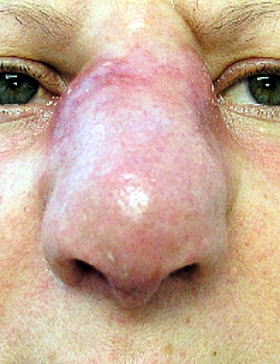
granuloma by permanent fillers
2.Collagen/Hyaluronic Acid/Radiesse Injections Learning from the issues caused by permanent fillers, new injectables were designed with the same structural components as of the human tissues.
Collagen for wrinkles was also used as nose filler but soon replaced by hyaluronic acid which was relatively long lasting.
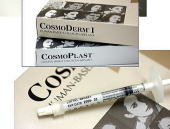
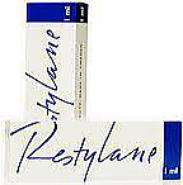
collagen hyaluronic acid
Both are soft gels so they were not capable enough to enhance nose contour.
It did not take that much time for Radiesse(calcium-based gel) to take over these two because of its firmer texture and long lasting effect.
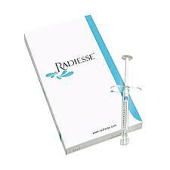
Radiesse
And Radiesse was the main filler for this method until recently.
But then, another trouble.
Just turned out these few years that injectables such as Radiesse, hyaluronic acid and others, in spite of their simplicity and easiness as procedures, they are intentionally avoided by most of the cosmetic surgeons as nose fillers because of their damaging effect to the surrounding nose tissues and sometimes to the eyes just immediately after the procedure when they were mistakenly injected to the arteries around the nose structure.
Using cannula(blunt needle) maybe the answer for this matter because it does not pierce any blood vessels, but still the outcome with soft fillers to the nose enhancement is not that satisfying.
Especially when injecting fillers to enhance the middle portion of the nose tip may show a narrower appearance, but subjects that have thicker skin might not benefit from this method.
Injecting more may spread the substance to the unwanted areas and this act may turn out to add more volume all over the tip, meaning worsening of the issue. So filler injection needs a precise diagnosis before performing it to the patient.

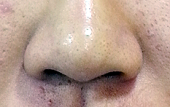
Subjects with thinner skin might be good candidates for this method.
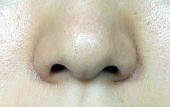
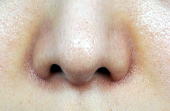
Fillers lasts for about a year.
3.Y-ko Thread Noselift Having firmer texture, a solid material, easily being inserted by a blunt cannula, meaning never hurts any blood vessels, made this thread method to be the newest generation of 'petit rhinoplasty'.
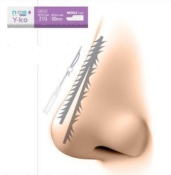
Y-ko thread for nose ridge
Used originally for the thred facelift, Y-ko thread is a dissolvable material that is capable also of enhancing nose contour, and with its spirally aligned barbs along its length, it can hold and show more effect than the fillers.


before Y-ko after Y-ko
By partiallly introducing it to the ridge may correct hump issues.
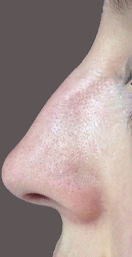
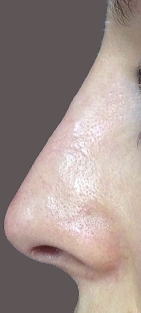
before Y-ko after Y-ko
Showing more effect on the tip is a highlight of this procedure.
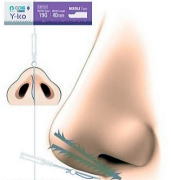
Y-ko for nose tip
It lifts the tip to show more sharper contour on bulbous nose tip.

The downtime(recovery time) for this procedure is the same with filler injections. Faster and swells less, but more effective and long lasting than fillers such as HA(hyaluronic acid).
Since it is made of safe dissolvable thread, it is expected to melt away within 6 months. But during this process, collagen fibers interact with the thread to take place of its function as the lifter of the nose tip.


Humps on nose bridge sometimes make nasal tip look lowered, and in this case Y-ko threads can help lift the lowered tip of the nose.
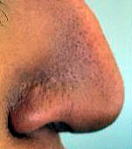
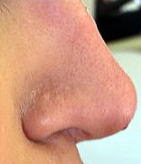
In actual insertion of the thread, a set of a blunt cannula and a thread is introduced directly along the columella(nose part that connects nose tip and nose base) to push or lift the tip with the thread and its barbs(spikes), leaving a needle point on the tip. Performed under local anesthesia.
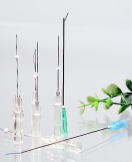
This has been the methods for instant noseliftng, and it is obvious that the effect duration is still yhe argument to this point.
And it is true that the effect is not as dramatic as the silicone implant method, but it is also true that there are those that do not need such striking change.
Some might think that nondissovable threads are the answer for the effect duration, nevertheless it is already proven in thread facelifting that such thread triggers issues such as infection or emerging out to the skin surface afterwards.
Especially nasal skin is a sensitive part of the ,so cautious usage of permanent material is certainly a must.
The quest for a simpler and long lasting stuff will be the trend for this cosmetic field.
さらなる詳細 、 further details

Since when cosmetic surgery popped up in human history, rhinoplasty was already one of the popular methods, tagging along with eye cosmetic care because of its dramatic effect even with just simple methods/
This is usually true with invasive surgeries, however, it is also a fact that lots of individuals prefer non-invasive procedures for an urgent or maybe not so obvious effect.
Imminent special events such as parties with short notices can sometimes benefit from these instant procedures.
Japan in postwar era, or maybe mostly around the globe, non-invasive rhinoplasty started with the uses of injectable silicone gel and paraffin wax, and then when collagen fillers appeared for wrinkle usage, it became an alternative, and then evolved to other injectables such as hyaluronic acid(Restylane, Juvederm), then Radiesse(calcium-based filler).
Radiesse was the main stream of the non-surgical rhinoplasty just until recently.
Considering this history of 'petit rhino', more detailed reasons will be discussed below, of why the thread procedure came out as the newest option and which direction it is heading to.
The rise and fall of the mentioned methods will be elaborated by listing them according to their historical appearance order:
1.Silicone Gel & Paraffin Wax Injections Silicone implants have been used for over 40 years and is still an active material today for nose enhancement, and it is undoubtedly the hint of the silicone gel injection, then afterwards other permanent, nondissolvable injectables such as paraffin wax were developed.
It is quite clear that the permanent one is the main interest in this period, but actually this was the problem, and even now it is still an issue and, at the same time, the somewhat improbable aim of this field.
Graft rejection reaction of the human body was unfortunately confirmed by these procedures not long after they were practised.
The body tries to force out substances that are not originally of its own and ironically shows appearances that not aesthetically good for someone who is longing for aesthetic looks.
Rejecton of these materials usually takes a long process of inflammation inside the body, then consequently produces granuloma(chronic infection nodules), which hardening causes bumps on the skin, unfortunately sometimes turns into abscess, which makes some whole through the skin, and let some of the nondissolvable fillers exposed on the surface.
Since this occur in along process, permanent fillers which are injected 30 or 40 years ago may sometimes cause some problem in this new century.

granuloma by permanent fillers
2.Collagen/Hyaluronic Acid/Radiesse Injections Learning from the issues caused by permanent fillers, new injectables were designed with the same structural components as of the human tissues.
Collagen for wrinkles was also used as nose filler but soon replaced by hyaluronic acid which was relatively long lasting.


collagen hyaluronic acid
Both are soft gels so they were not capable enough to enhance nose contour.
It did not take that much time for Radiesse(calcium-based gel) to take over these two because of its firmer texture and long lasting effect.

Radiesse
And Radiesse was the main filler for this method until recently.
But then, another trouble.
Just turned out these few years that injectables such as Radiesse, hyaluronic acid and others, in spite of their simplicity and easiness as procedures, they are intentionally avoided by most of the cosmetic surgeons as nose fillers because of their damaging effect to the surrounding nose tissues and sometimes to the eyes just immediately after the procedure when they were mistakenly injected to the arteries around the nose structure.
Using cannula(blunt needle) maybe the answer for this matter because it does not pierce any blood vessels, but still the outcome with soft fillers to the nose enhancement is not that satisfying.
Especially when injecting fillers to enhance the middle portion of the nose tip may show a narrower appearance, but subjects that have thicker skin might not benefit from this method.
Injecting more may spread the substance to the unwanted areas and this act may turn out to add more volume all over the tip, meaning worsening of the issue. So filler injection needs a precise diagnosis before performing it to the patient.


Subjects with thinner skin might be good candidates for this method.


Fillers lasts for about a year.
3.Y-ko Thread Noselift Having firmer texture, a solid material, easily being inserted by a blunt cannula, meaning never hurts any blood vessels, made this thread method to be the newest generation of 'petit rhinoplasty'.

Y-ko thread for nose ridge
Used originally for the thred facelift, Y-ko thread is a dissolvable material that is capable also of enhancing nose contour, and with its spirally aligned barbs along its length, it can hold and show more effect than the fillers.


before Y-ko after Y-ko
By partiallly introducing it to the ridge may correct hump issues.


before Y-ko after Y-ko
Showing more effect on the tip is a highlight of this procedure.

Y-ko for nose tip
It lifts the tip to show more sharper contour on bulbous nose tip.

The downtime(recovery time) for this procedure is the same with filler injections. Faster and swells less, but more effective and long lasting than fillers such as HA(hyaluronic acid).
Since it is made of safe dissolvable thread, it is expected to melt away within 6 months. But during this process, collagen fibers interact with the thread to take place of its function as the lifter of the nose tip.


Humps on nose bridge sometimes make nasal tip look lowered, and in this case Y-ko threads can help lift the lowered tip of the nose.


In actual insertion of the thread, a set of a blunt cannula and a thread is introduced directly along the columella(nose part that connects nose tip and nose base) to push or lift the tip with the thread and its barbs(spikes), leaving a needle point on the tip. Performed under local anesthesia.

This has been the methods for instant noseliftng, and it is obvious that the effect duration is still yhe argument to this point.
And it is true that the effect is not as dramatic as the silicone implant method, but it is also true that there are those that do not need such striking change.
Some might think that nondissovable threads are the answer for the effect duration, nevertheless it is already proven in thread facelifting that such thread triggers issues such as infection or emerging out to the skin surface afterwards.
Especially nasal skin is a sensitive part of the ,so cautious usage of permanent material is certainly a must.
The quest for a simpler and long lasting stuff will be the trend for this cosmetic field.
さらなる詳細 、 further details
Miyagi Cosmetic Surgery宮城美容外科クリニック
〒900-0016
沖縄県那覇市前島2−2−1(3F)
2-2-1-3F Maejima, Naha City
Okinawa, Japan 900-0016
TEL 098-860-9120
FAX 098-860-9176
※電話が混み合っている場合、ウェブやメールでの予約も受けております。オンライン予約はこちら
In case line is busy, please make reservations through our website or e-mail.
For online booking click here
e-mail miyagics@woody.ocn.ne.jp